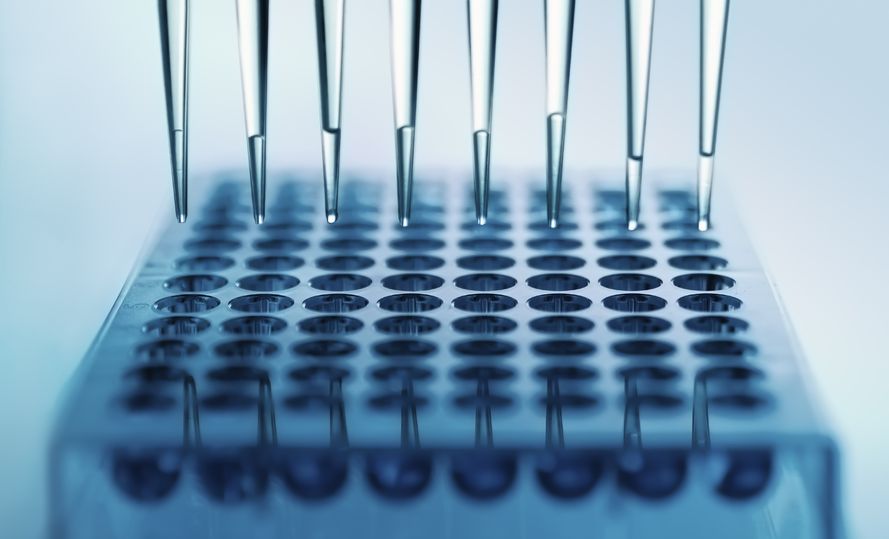 Flavio Somanji
Flavio Somanji
It’s not a new phenomenon wherein scientists and researchers (S&R), on missions to foster greater knowledge in their respective fields, make novel findings that prove essential to the overall progress of science. Nevertheless, these discoveries are, more often than not, serendipitously stumbled upon (for example, penicillin). As expected, the results of any research project are highly dependent on the initial/follow-up question(s) posed, as well as proper execution of scientific techniques.
In an atmosphere of rapidly advancing technology, it’s no surprise that S&R have made, and continue to make, great strides to incorporate as much new technology as possible into their labs, all the while trying to avoid redundancy and remain cost-efficient. This article sets forth to shed light on a few additional, perhaps scrupulous, laboratory practices and experimental setups that lead to more conclusive data analysis and better understanding so we can garner more knowledge in an a posteriori manner.
Molecular biology techniques ranging from gene editing using tools such as CRISPR, to genetic screening with HRM-PCR, have propelled the fields of biology and neuroscience into the popular arena, thereby revivifying interest in tackling a host of pathologies. Similarly, basic biochemistry techniques such as immunoprecipitations (IPs) and pull-downs have provided sufficient insights into protein interactions, thus identifying key players in signaling pathways and overall protein trafficking. Nonetheless, use and interpretation of results from such experiments need to be rigorous.
For instance, co-IPs are great means to determine “natural” interactions between proteins of interest, assuming proteins maintain their native structures. One way to increase the certainty of this assumption is to handle the cell lysates with care and use proper precautions, such as taking into account temperature and protease activity. Delving deeper to study the binding domain of proteins brings forth much more complexity, and is currently being investigated by deletion-analysis, whereby regions of a protein are deleted to gauge their importance in interactions. Results from such studies have led to a multitude of peer-reviewed publications.
However, proteins come in various shapes, sizes, and solubilities, and mutations have been implicated in protein conformation change. A protein encoded by gene X can have more than one conformation under homeostasis. Nevertheless, one structure will be dominant. So, in a nutshell, protein X can have structure A, B or C at any given time under normal conditions, although a majority of protein X will assume structure A. What then do we derive from co-IPs or pull-downs using deletion assays and tagged proteins? Doesn’t it change the folding pattern and, hence, native structure of the peptide? How, then, do we interpret results from such experiments, wherein deletions or additions are incorporated while assuming normal folding of the protein? Deletion analysis can—not always, but can—lead to conformational changes, and in order to make the results more reliable, the folding structure of the truncated/mutated protein has to be compared with the same domain present in the wild type to determine whether it folds in the same manner and has not been affected by the deletion.
Advanced computer techniques such as molecular dynamics simulation (MDS) utilize basic laws of physics to determine molecular/atomic interactions, and could be incorporated as an intermediary step prior to gene cloning, in order to gauge the structure of the mutated protein in comparison to the wild type. MDS will prove to be a quicker alternative to crystallography, thus providing a higher level of certainty in the results derived from IPs utilizing domain-deleted proteins. Nonetheless, crystallography is nowhere near obsolete, and perhaps remains the highest order confirmation we can get with regards to the certainty of the structure of any given protein. Technological advances, however, seem to be narrowing the gap between MDS and crystallography.
Furthermore, reciprocal experiments are essential to confirm preliminary results derived from co-IPs. For example, if protein A is pulled down or immunoprecipitated and found to bind to protein B, a reciprocal experiment has to be performed to assess the binding capacity of protein A, upon protein B pull-down/IP. Following on a more technical route, most protocols recommend solubilizing the precipitate from an IP/pull-down with a dye-containing SDS buffer (sample buffer) for subsequent loading on an SDS-PAGE (Diagram A). This facilitates ease, but inconsistencies can arise when loading the sample since you cannot see exactly where the pipette tip is reaching into the tube due to the dye.
One proposed mechanism to overcome this hurdle and load equal amounts across samples is adding a dye after the solubilized protein in SDS has been transferred to a new tube, leaving behind the beads/resin used for the IP/pull-down (Diagrams C and E – samples depicted in blue for illustrative purposes). Diagrams B and D portray possible detrimental scenarios where some of the beads are taken up, thereby minimizing the amount of protein eluent to be loaded. For example, probing for a protein of interest after co-IP in samples B and C or D and E can yield bands depicted below each tube, which portray a slight difference between samples, although less protein was loaded in the case of B and D. Thus, conducting experiments which perhaps incorporate novel technological advances such as MDS and proper handling of samples will go a long way to validate the interpretation of results derived from experiments such as IPs and pull-downs, especially when truncated proteins are used to investigate binding domains.
scenarios where some of the beads are taken up, thereby minimizing the amount of protein eluent to be loaded. For example, probing for a protein of interest after co-IP in samples B and C or D and E can yield bands depicted below each tube, which portray a slight difference between samples, although less protein was loaded in the case of B and D. Thus, conducting experiments which perhaps incorporate novel technological advances such as MDS and proper handling of samples will go a long way to validate the interpretation of results derived from experiments such as IPs and pull-downs, especially when truncated proteins are used to investigate binding domains.
Quartzy is the world’s No. 1 lab management platform. We help scientists easily organize orders, manage inventory, and save money. We’re free and always will be. Visit Quartzy.com or reach out at info@quartzy.com.
Interested in writing for The Q? Send us an email!
Share this:

Flavio Somanji
Flavio holds a BS degree in Biology and Neuroscience from Syracuse University and is a member of the research staff at Tufts University School of Medicine. He is concurrently pursuing a Masters degree in Bioengineering and Nanotechnology at Harvard University. Flavio spends his spare time by applying inherent entrepreneurial skills in the tech startup world which has led to the establishment of EcoDemand™, a soon-to-be launched ecommerce marketplace.
